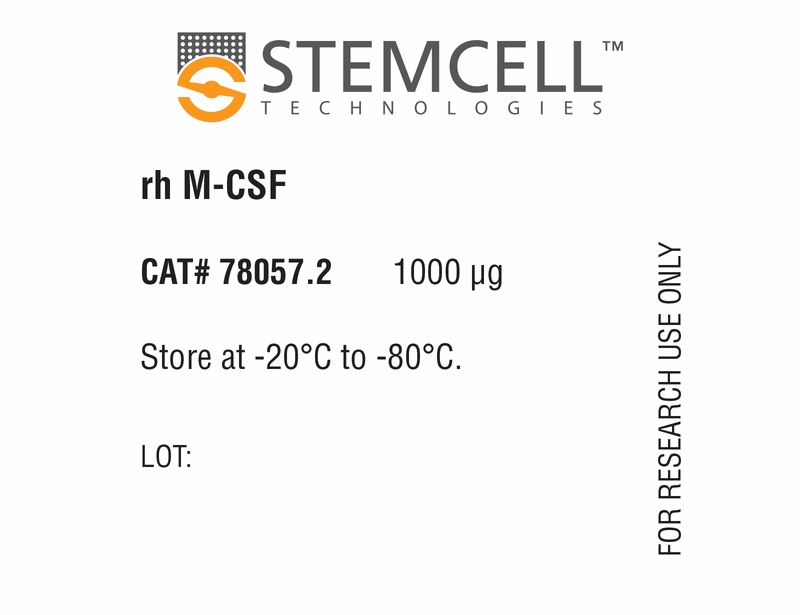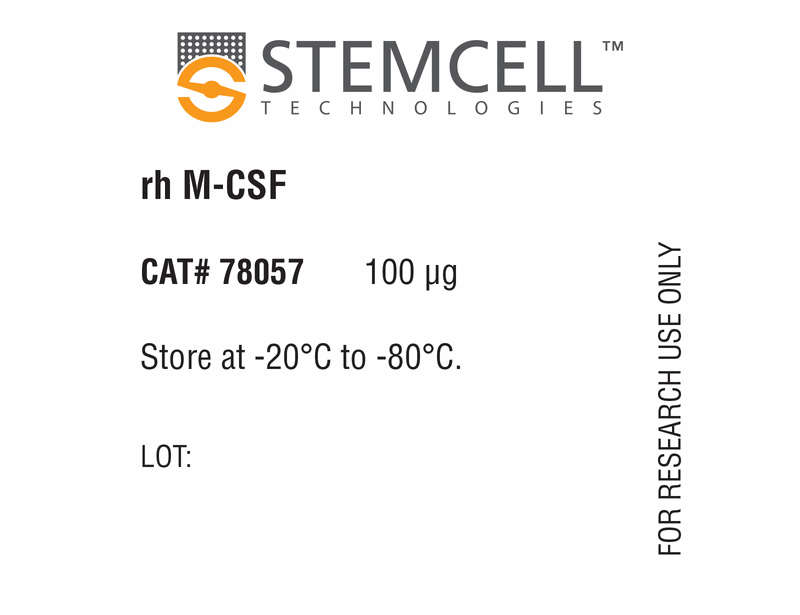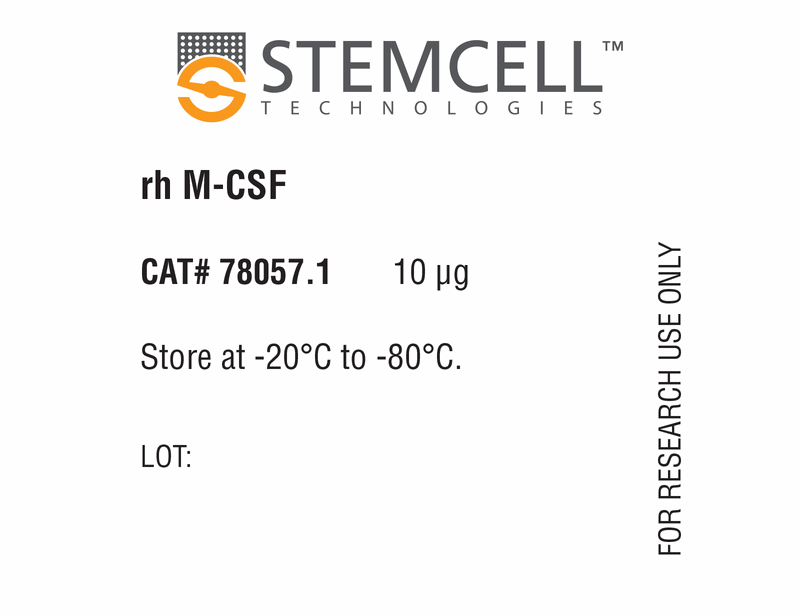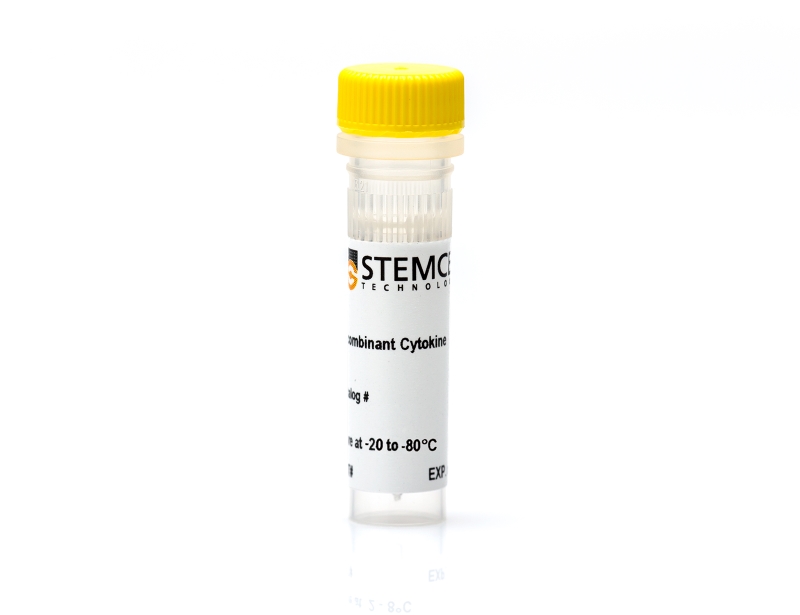概要
M-CSF exerts its biological effects by signaling through a receptor tyrosine kinase (CSF-1R or M-CSF-R) encoded by the c-fms proto-oncogene (Hamilton). CSF-1R shares similar structural features with other growth factor receptors, including the stem cell factor (SCF) receptor, platelet-derived growth factor receptor (PDGF-R), and Flt3/Flk-2 receptor tyrosine kinase. Stimulation of the CSF-1R upon binding to M-CSF activates MAPK, PI3K, and PLCγ signaling pathways (Chockalingam & Ghosh). Human and mouse M-CSF sequences are highly conserved both at nucleotide and amino acid levels (80% homology; DeLamarter et al.).
技术资料
| Document Type | 产品名称 | Catalog # | Lot # | 语言 |
|---|---|---|---|---|
| Product Information Sheet | Human Recombinant M-CSF | 78057, 78057.1, 78057.2 | All | English |
| Safety Data Sheet | Human Recombinant M-CSF | 78057, 78057.1, 78057.2 | All | English |
数据及文献
Data
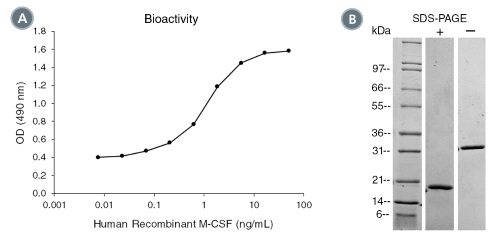
(A) The biological activity of Human Recombinant M-CSF was tested by its ability to promote the proliferation of NFS-60 cells. Cell
proliferation was measured after 44 hours of culture using a fluorometric assay method. The EC50 is defined as the effective
concentration of the growth factor at which cell proliferation is at 50% of maximum. The EC50 in the above example is 0.9 - 1.4 ng/mL.
(B) 1 μg of Human Recombinant M-CSF was resolved with SDS-PAGE under reducing (+) and non-reducing (-) conditions and visualized
by Coomassie Blue staining. Human Recombinant M-CSF is a homodimer of 18.5 kDa subunits with a predicted total molecular mass of
37.1 kDa.

 网站首页
网站首页
